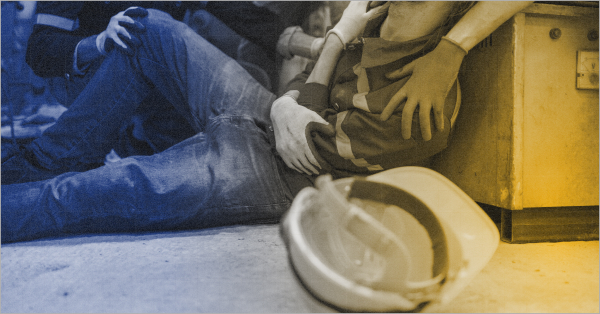In India’s dynamic and rapidly expanding economy, businesses are exposed to a wide range of operational risks every day. While growth opportunities are endless, so are the chances of unintended mishaps—like a customer slipping on your store floor or an employee accidentally damaging a client’s equipment during service. In such scenarios, liability costs can quickly spiral into lakhs or even crores of rupees in legal claims, medical bills, or property repairs.
This is where Commercial General Liability (CGL) Insurance becomes crucial. Among the most important features of this policy are Bodily Injury (BI) and Property Damage (PD) coverage. These two coverages form the backbone of CGL policies and are vital for protecting your business from third-party liability risks.
In this blog, we will go beyond the basics to provide you with a deep, nuanced understanding of what BI and PD coverage means under a CGL Policy in India, how it applies across sectors, and what your business needs to keep in mind.
Why Bodily Injury & Property Damage Coverage Matters in India
Commercial activities in India often involve public interaction, subcontractors, vendor engagements, or operations at third-party premises. Even minor accidents can expose businesses to costly lawsuits. In India, liability claims have become more visible due to increased consumer awareness and legal recourse under laws like the Consumer Protection Act, Factories Act, and industry-specific regulations—even though tort litigation remains relatively limited.
CGL Insurance offers a layer of financial protection to businesses against such third-party claims—be it a bodily injury claim from a customer or a property damage suit from a vendor.
At the heart of this coverage are two principal components:
- Bodily Injury (BI): Covers legal liability arising from physical harm to a third party.
- Property Damage (PD): Covers legal liability for accidental damage to third-party property.
Without this coverage, your business may have to bear legal fees, settlements, and reputational damage—all out of pocket.
What Exactly Is Covered Under Bodily Injury and Property Damage?
Let’s break down the two pillars of this insurance protection in depth:
Bodily Injury (BI)
Refers to physical harm, illness, disease, or death suffered by a non-employee due to the insured’s business operations. This includes:
- Accidents at your premises (e.g., a guest slips on a wet lobby floor)
- Incidents caused during services (e.g., falling equipment at a client site)
- Injuries caused by faulty installations or equipment provided by you
The policy covers:
- Medical expenses (hospital, ambulance, diagnostics)
- Legal defence costs
- Court-awarded damages or negotiated settlements
- Funeral or compensatory expenses in case of death
Example: A guest visiting a manufacturing plant in Pune trips over a loose cable, fractures a bone, and sues the company. The CGL Policy pays for medical expenses and court defence.
Note: While common in global markets, medical payments coverage is typically optional in Indian CGL policies and must be specifically added. It may help cover immediate treatment costs for third-party injuries without litigation, often seen as a goodwill gesture.
Property Damage (PD)
Refers to the accidental destruction of, or physical damage to, a third party’s tangible property, including:
- Loss of use of the damaged property
- Deterioration caused during installation, servicing, or transport
- Collateral damage caused by fire, electrical issues, or human error
The policy typically includes:
- Cost of repair or replacement of the property
- Legal expenses if the third party sues
- Loss of use compensation, if applicable
Note: Loss of use compensation—if directly resulting from physical property damage and clearly quantified—may be covered, but is subject to policy terms and insurer discretion.
Example: A contractor accidentally breaks an imported glass wall while drilling in a client’s office. The CGL Insurance covers the cost of replacement.
The Mechanics of CGL: When Does BI & PD Cover Apply?
Under most CGL policies in India, the bodily injury and property damage coverage is triggered on an “occurrence” basis. This means the policy will respond if:
- The incident (accident or damage) occurred during the policy period.
- It was accidental and not intentional.
- It happened within the coverage territory (often India, unless otherwise endorsed).
It’s important to note that claims must arise from business-related operations—not personal liabilities or excluded contractual obligations.
Key Inclusions in Bodily Injury & Property Damage Cover
Here’s what is generally included:
- Medical Payments
While not always standard, some CGL policies may allow optional coverage for immediate medical treatment expenses—provided as goodwill, even without legal proceedings.
- Premises Liability
Covers liability for accidents that occur on your owned or rented premises. Particularly relevant for retailers, restaurants, and corporate offices.
- Operations Liability
Covers liability for BI or PD caused during business operations, including work performed at third-party locations. Ideal for service providers, contractors, and installation businesses.
- Products & Completed Operations (optional or extended cover)
Protects against liability arising from defective products or completed work that causes harm later. While this is typically an extension, it integrates well with BI & PD coverage.
- Legal Defence Costs
All legal costs, including solicitor fees and court charges, are typically borne by the insurer—even if the claim is found to be baseless, provided it falls within policy terms.
What’s Excluded from BI & PD Coverage?
CGL Insurance is comprehensive but not all-encompassing. Here’s what’s typically excluded under BI and PD cover:
- Injury to Employees
Covered under a separate Workmen’s Compensation Insurance. Any injury to your own employees is not covered under CGL’s bodily injury section. - Damage to Owned or Leased Property
If you damage your own equipment, assets, or leased machinery, it won’t be covered under CGL. This is the domain of property insurance. - Contractual Liability
If you sign a contract assuming liabilities that wouldn’t otherwise exist, and haven’t disclosed it to the insurer, such claims may be rejected. - Pollution Damage
Standard BI & PD does not cover pollution or contamination. However, insurers may offer limited ‘sudden and accidental pollution’ coverage through specific endorsements. Broader environmental liability requires a separate policy. - Fines & Penalties
Any punitive damages, statutory fines, or criminal penalties are strictly excluded.
Industry-Specific Relevance of BI & PD in India
Let’s explore how this coverage applies across various Indian industries:
- Construction
Construction companies face high exposure to injury and damage claims due to equipment, on-site operations, and subcontractors. BI & PD insurance is often mandatory in tenders.
- Hospitality
Hotels, banquet halls, and restaurants host hundreds of people daily. A single slip-and-fall or ceiling collapse could result in a claim worth lakhs.
- Manufacturing
A visiting client or service vendor could get hurt inside the factory. Also, a manufacturing defect causing third-party property damage falls under this cover (if extended).
- IT & Consulting
While considered “low-risk,” IT firms visiting client premises or hosting events also face liabilities if someone is injured during a presentation or office tour.
- Pharmaceuticals
Pharma units often deal with chemicals and sensitive environments. Accidents involving third parties are not uncommon and are very expensive to litigate.
Understanding Policy Limits and Sublimits
The effectiveness of your BI & PD cover depends on the limit of indemnity mentioned in your policy. These are typically broken into:
- “Per Occurrence” Limit
Maximum payable per claim, regardless of how many people are injured or how much property is damaged. - “Aggregate” Limit
Cumulative maximum that the insurer will pay during the entire policy term. - Sublimits
Policies may also have sublimits for:
- Medical expense payments
- Fire damage legal liability
- Products liability
Note: Always ensure your sum insured reflects the scope and scale of your operations. Underinsurance is a common issue in India and may lead to partial claims settlement.
How to File a BI or PD Claim in India
Here’s a step-by-step guide to claim settlement:
- Notify the insurer immediately after the incident.
- Document evidence — photographs, videos, witness statements, FIR (if needed).
- Submit claim documents, including invoices for repair, hospital bills, or legal notices.
- Insurer investigation may involve surveys, interviews, and site inspections.
- Settlement is done based on legal liability, policy limits, and submitted documentation.
While the IRDAI has outlined timelines under the ‘Protection of Policyholders’ Interests’ regulations, third-party CGL claims—especially those involving legal disputes—may experience delays due to court proceedings or complex liability investigations.
The Bottomline:
In a litigious business environment, especially in urban India where consumer rights and third-party responsibilities are more actively enforced, the risk of accidental injury or property damage can no longer be brushed aside.
Bodily Injury and Property Damage coverage under a CGL Policy is not a luxury—it’s a necessity. It protects you from unpredictable incidents, aligns with legal compliance, and builds customer trust.
Whether you are a start-up, an SME, or an enterprise, BI & PD coverage:
- Shields your balance sheet from sudden legal payouts
- Provides peace of mind to stakeholders
- Ensures business continuity during disputes
As Indian courts continue to enforce liability laws more stringently, it’s essential for businesses to be proactive. Review your policy annually, ensure your limits are appropriate, and disclose any operational changes to your insurer. Consider working with a seasoned insurance advisor to tailor your coverage with industry-specific add-ons like Product Liability, Fire Damage Legal Liability or Tenant’s Legal Liability.
Protect your business from what you can’t predict—because the cost of not being covered is far greater than the premium.








